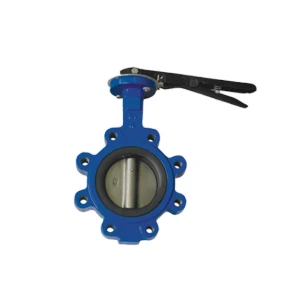Feb . 10, 2025 11:32
When delving into the intricacies of butterfly valves, understanding their dimensions is paramount for ensuring compatibility and efficiency in industrial applications. Butterfly valves, known for their compact design and cost-effectiveness, are essential components in various systems requiring regulated flow.

Butterfly valves function with a disc positioned in the center of a pipe. Connected to an actuator or manual lever, this disc rotates to control the flow of fluids. Knowing the exact dimensions helps in proper installation, ensures the best performance, and avoids issues such as leakage or pressure drop.
Dimensions of butterfly valves vary depending on factors such as line size, pressure requirements, and specific industry standards. For instance, in petrochemical applications, a butterfly valve often needs to conform to stringent specifications due to the nature of the fluids involved.

The Importance of Face-to-Face Dimensions
One of the critical considerations is the face-to-face dimensions, which refer to the distance between the two ends of the valve that mate with the piping system. This measurement is crucial as it determines how well the valve will fit into existing infrastructure without requiring additional modifications or fittings. Standardizing these dimensions helps in reducing installation time and cost.
Wafer vs. Lug Style Valves
There are primarily two styles of butterfly valves to consider wafer and lug. Wafer style butterfly valves are lightweight and easy to install, fitting snugly between pipe flanges. They are designed to seal against bi-directional pressure to prevent backflow. However, they require bolts that go through the entire pipe flange, making it less robust than the lug type.
Lug style butterfly valves have threaded lugs outside the valve body, allowing them to be bolted onto the pipe flange. This design allows for sections of the piping system to be isolated for maintenance without affecting the rest of the system. Understanding these differences and selecting the right type for your application is crucial for optimal operation.
Material Considerations
Butterfly valves are available in different materials including cast iron, stainless steel, and PVC. The choice of material affects not only the durability and corrosion resistance of the valve but also the dimensional specifics. For example, metal butterfly valves may have thicker bodies to withstand higher pressures, thereby affecting the overall dimension.
16 butterfly valve dimensions
Pressure Rating Impacts
Another key factor is the valve's pressure rating, often correlated with the nominal pipe size (NPS). Higher pressure ratings typically require more robust construction, altering the dimensions especially in terms of thickness and weight. A butterfly valve meant for high-pressure applications will have a thicker disc and a stronger stem to prevent deformation and failure.
Role of Industry Standards
When discussing dimensions, it's imperative to consider industry standards such as API, ASME, or ISO which dictate specific measurement criteria that ensure compatibility and safety regardless of manufacturer. Adhering to these standards means your butterfly valve will fit seamlessly into systems meeting these global benchmarks.
Installation Tips for Optimal Performance
Accurate measurement and installation are necessary for butterfly valves to function effectively. Ensure that the valve is centered between pipes to avoid unnecessary stress on the disk and stem. Misalignment can lead to uneven wear and potential leakage. Moreover, using appropriate sealing materials compatible with the medium flowing through the system will prevent deterioration and maintain integrity.
The Expert's Perspective on Maintenance
Routine maintenance is non-negotiable to ensure the longevity and reliability of butterfly valves. This includes regular inspection for wear and tear, especially on the seats and seals which are susceptible to damage in hostile environments. Ensuring that the actuating mechanism is functioning smoothly is also vital, as any hindrance could lead to improper closing of the valve.
In conclusion, understanding butterfly valve dimensions is a multifaceted endeavor that requires a keen awareness of application requirements, material selection, industry standards, and practical installation techniques. By integrating these aspects, you enhance both the performance and lifespan of your butterfly valves, solidifying your infrastructure's reliability and efficiency. Industry professionals and system designers must prioritize dimension analysis for seamless operational success.


 Call us on:
+86-311-86935302
+86-311-86935302
Call us on:
+86-311-86935302
+86-311-86935302
 Email Us:
info@thriveonvalve.com
Email Us:
info@thriveonvalve.com South of Huanmadian Village Town, Ningjin County, Xingtai, Hebei Province, China
South of Huanmadian Village Town, Ningjin County, Xingtai, Hebei Province, China